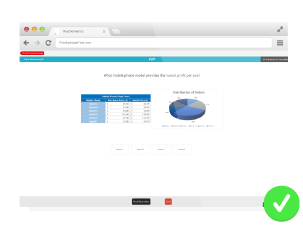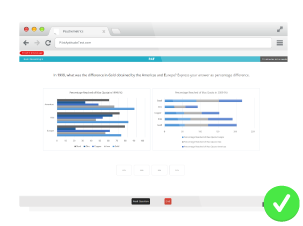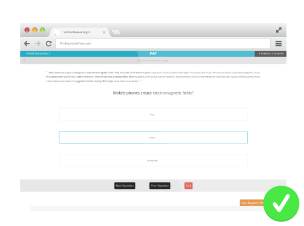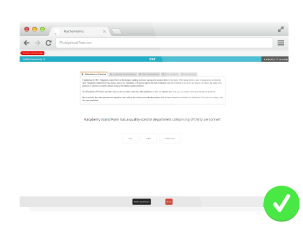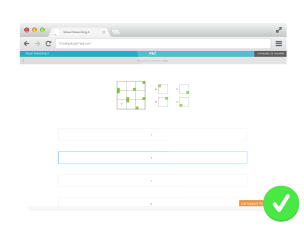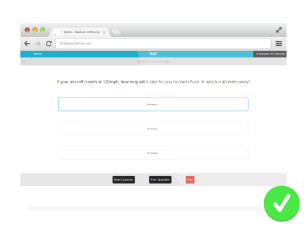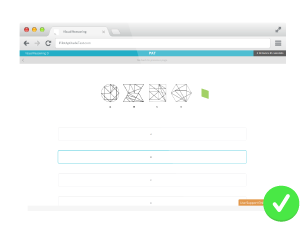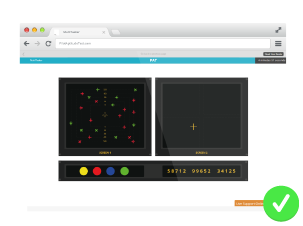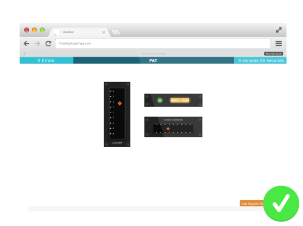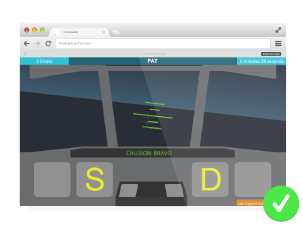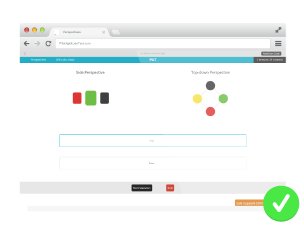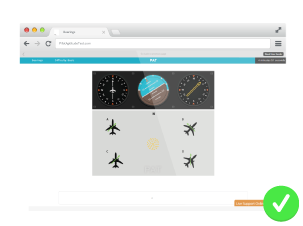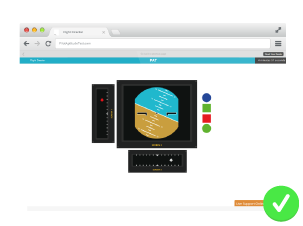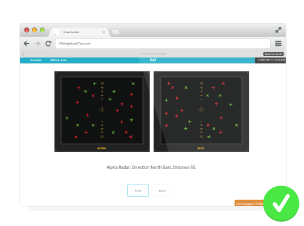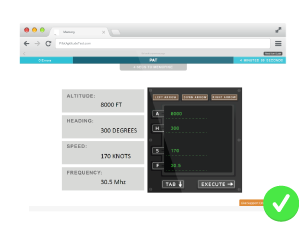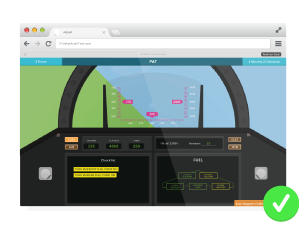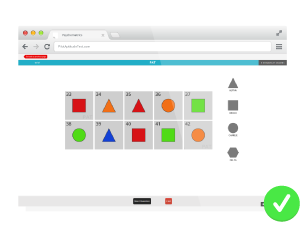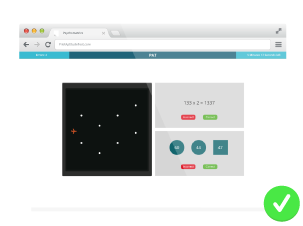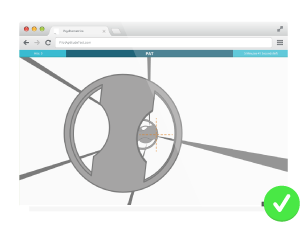 Last Updated on:
Last Updated on: March 2024
Talent Q
Disclaimer: We hereby notify you that there is no express or implied affiliation or endorsement between the organisation listed below and PilotAptitudeTest.com, and that information herein is provided on an as is basis with no guarantees made for accuracy.
Overview
Led by Roger Holdsworth, a co-founder of SHL, another well-known testing company, Talent Q was established in 2006 with the aim of developing a new approach to psychometric testing.
Where traditional psychometric tests were built for specific industry, Talent Q have taken the approach that a singular psychometric test can be used for a wide range of applications in a plethora of industries, including professional recruitment, where it has found limited use in the aviation industry by airlines wishing to reduce costs associated with recruitment of pilots.
In 2014 Talent Q was acquired by the Hay Group, an international management consulting organisation.
Preparation Advice
Whilst typically, pilot aptitude tests aim to assess the same key core skills required to complete pilot training successfully and/or operate an aircraft competently, Talent Q psychometric tests are designed to be utilised in a wide variety of industries and therefore tend to focus less on traditional assessment areas commonly associated with pilot aptitude tests.
The Talent Q psychometric test, broadly speaking, does not include the assessment of skills such as multi-tasking, spatial awareness, memory capacity, hand-to-eye coordination and mental arithmetic.
Instead, the Talent Q psychometric test that you are likely to face at assessment with an airline will assess abilities such as numerical reasoning, verbal reasoning, interpreting information and reports, using figures, data and statistics, and understanding and manipulating abstract or logical symbols.
It should be noted that pilot candidates participating in a Talent Q psychometric test should anticipate being assessed with other methods and we therefore recommend also practicing multi-tasking, selective attention, reaction time, spatial awareness, memory capacity, hand-to-eye coordination and mental arithmetic.
Talent Q tests present information that looks very different to traditional psychometric tests. There is a tendency to show more irrelevant data that the candidate is required to sift through, and there can also be a large number of potential answers – these two features make a Talent Q psychometric test particularly challenging.
Activities suitable for Talent Q Test Preparation
The Talent Q psychometric test that you are likely to face at assessment with an airline will assess abilities such as numerical reasoning, verbal reasoning, interpreting information and reports, using figures, data and statistics, and understanding and manipulating abstract or logical symbols.
We recommend using the content shown below to tailor your preparation specifically for the Talent Q psychometric test.
A Super Plus Subscription can be purchased instantly online and will provide access to the content shown below:
Num Reasoning (Type 1)
Numerical Reasoning 1 analyses your ability to interpret information, using figures, tables, graphs and statistics and come to conclusions on the data, just like Talent Q.
Num Reasoning (Type 2)
Numerical Reasoning 2 analyses your ability to interpret information, using figures, tables, graphs and statistics and come to conclusions on the data, just like Talent Q.
Verbal Reasoning (Type 1)
Our verbal reasoning content, organised by excerpt, accurately mimics the questions posed in a large majority of pilot aptitude and psychometric tests, including CEB/SHL, Talent Q and Cut-E.
Verbal Reasoning (Type 2)
Our verbal reasoning content, with multiple passages per test, accurately mimics the questions posed in a large majority of pilot aptitude and psychometric tests, including CEB/SHL, Talent Q and Cut-E.
Visual Reasoning 2
Visual Reasoning 2 requires the candidate to identify a pattern and route from a collection of images by selecting from four available options.
Visual Reasoning 3
Visual Reasoning 3 presents cube nets with each panel containing a symbol. Candidate must identify which cube net relates to the three-dimensional cube.
Mental Mathematics
Our mathematics database, organised in to easy, medium and hard difficulties, accurately mimics the questions posed in a large majority of pilot aptitude tests.
Visual Reasoning 4
Visual Reasoning 4 presents four images each containing numerous scrambled lines and tasks the candidate with identifying which image hides a shape within.
We would also recommend using these activities for aspects of your assessment:
Aspects
Mimicking tasks within a jet aircraft, Aspects assesses and enhances candidate ability in spatial awareness by incorporating aural statements and visual imagery.
MultiTasker
Encompassing multiple tasks in to one activity, MultiTasker assesses and enhances candidate ability in multi-tasking, hand-to-eye coordination and selective attention
Control
Control assesses and enhances candidate ability in hand-to-eye coordination and selective attention using multiple control axes and visual cues.
Command
Incorporating control and acknowledgment of cues, Command assesses and enhances multi-tasking, selective attention and hand-to-eye coordination skills.
Tracking
Tracking assesses and enhances candidate multi-tasking and hand-to-eye coordination skills with the use of two control axes controlled by opposing inputs.
Guidance
Tasking the candidate with controlling multiple intermittently changing datums, Guidance assesses and enhances selective attention and hand-to-eye coordination skills.
Perspectives
Perspectives assesses and enhances spatial awareness, tasking the candidate with matching sets of multicoloured cylinders orientated in to different perspectives.
Switch
Switch establishes an understanding of memory capacity and selective attention skills, tasking the candidate with efficiently acknowledging change.
Bearings
Bearings assesses user understanding of their position in physical space, known as spatial awareness, using common flight instruments.
Flight Director
This highly accurate test simultaneously assesses and enhances multi-tasking, hand-to-eye coordination and memory capacity skills.
Orientation
Orientation assesses spatial awareness and selective attention skills, by tasking candidates with identifying friend or foe aircraft.
Memory
Memory assesses selective attention and memory capacity skills, tasking the candidate with efficiently memorising and inputting four sets of data repeatedly.
Adjust
A challenging activity, Adjust assesses multi-tasking, spatial awareness, hand-to-eye coordination, selective attention and mental mathematic skills.
Grid
Rectangular grid containing a variety of different coloured shapes. The candidate must examine the grid and determine which shape does not represent the provided values.
Align
Multi-tasking activity with three different activities which must be monitored and successfully completed simultaneously. Horizontal and vertical control mode are provided for practice.
Spin
Rotating tube containing a variety of different two-dimensional shapes, which must be correctly navigated (or flown through) to ensure continued progression through the tube.
To start preparing, visit our website on laptop or desktop computer to purchase a subscription from as little as $20.
To start preparing, purchase a subscription from as little as $20 and join over 30,000 pilot candidates who have used our software.
Get Started From €20
- Sold in 75+ Countries
- Instant Access
- Fast & One-on-One Support
- No Install Required
 Last Updated on: March 2024
Last Updated on: March 2024